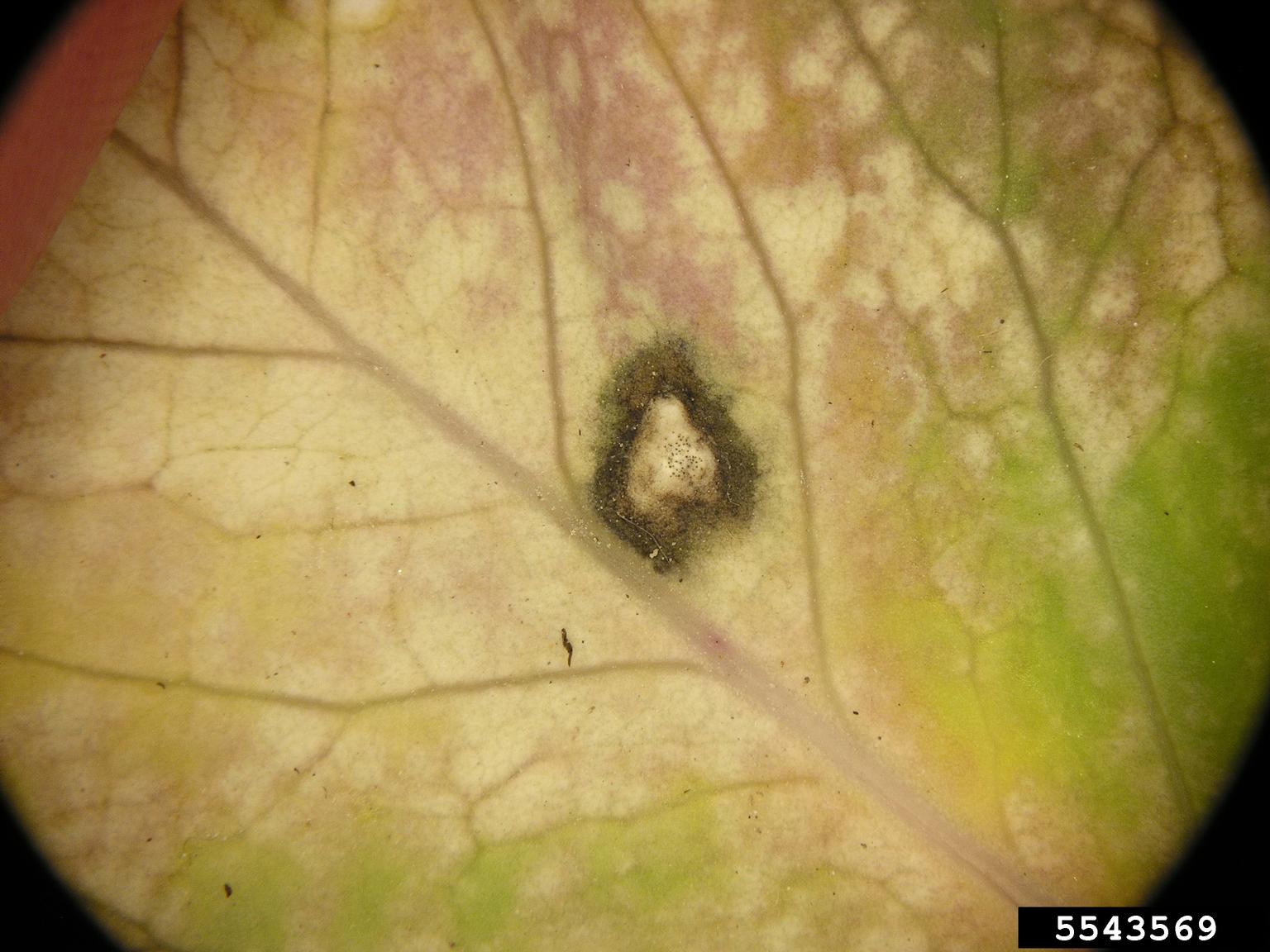What Is White Leaf Spot – Learn About Brassica White Leaf Spot

Spotting on the foliage of cole crops might just be white leaf spot fungus, Pseudocercosporella capsellae or Mycosphaerella capsellae, also known as brassica white leaf spot. What is white leaf spot? Read on to learn how to identify brassica white leaf spot and white leaf spot control methods.
What is White Leaf Spot?
The fungus causes circular, light tan to yellow leaf spotting. The lesions are about ½ inch (1.5 cm.) across, sometimes accompanied by dark streaking and splotching. Brassica white leaf spot is a fairly uncommon and generally benign disease of cole crops. It often coincides with heavy winter rains. When conditions are favorable, a characteristic fuzzy white growth of spores can be observed on the leaf spots. Ascosospores develop on infected plants during the fall and are then dispersed by wind following rain. The asexual spores, conidia that develop on the leaf spots, are spread by rain or splashing water, resulting in a secondary spread of the disease. Temperatures of 50-60 F. (10-16 C.), along with moist conditions, foster the disease. In some instances, this disease may result in severe losses. For example, oilseed rape grown in the United Kingdom and Canada have reported 15% losses due to the fungus. Oilseed rape, turnip, Chinese cabbage, and mustard seem to be more susceptible to the disease than other Brassica species, such as cauliflower and broccoli. Weedy greens such as wild radish, wild mustard, and shepherd’s purse are also prone to the fungus as are horseradish and radish.
White Leaf Spot Fungus Control
The pathogen does not survive in the soil. Instead, it lives on weed hosts and volunteer cole plants. The disease is also transmitted via seed and infected crop residue. There are no control measures for brassica white leaf spot. Treatment for white leaf spot involves the removal and destruction of infected plants. Prevention is the best method for control. Use only disease-free seeds or resistant cultivars. Practice crop rotation, rotating cole crops every 3 years, and excellent sanitation by disposing of infected plant material. Also, avoid working in and around plants when they are wet to avoid transmitting the fungus to uninfected plants. Avoid planting near or in a field that was previously infected and control host weeds and volunteer crucifer plants.
Sign up for the Gardening Know How newsletter today and receive a free copy of our e-book "How to Grow Delicious Tomatoes".

Amy Grant has been gardening for 30 years and writing for 15. A professional chef and caterer, Amy's area of expertise is culinary gardening.
